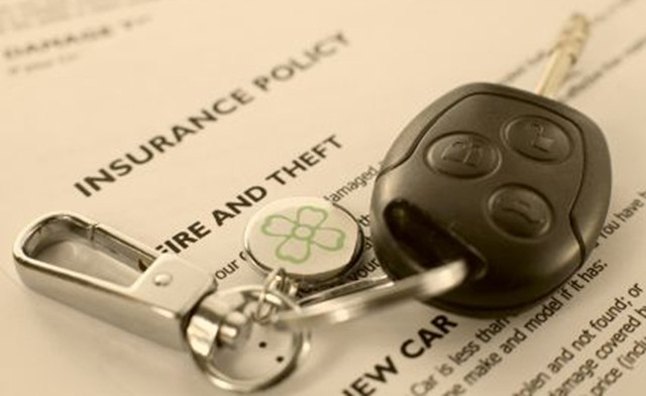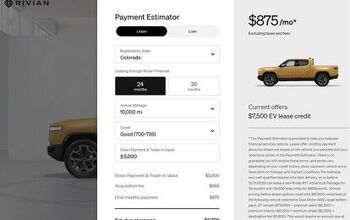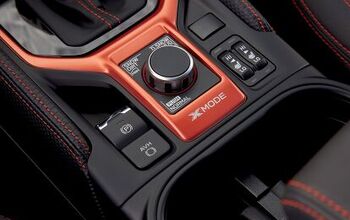Automobile Insurance Glossary
There’s a lot to know and keep track of in the fast-paced world of automobile insurance. The myriad of terms used to describe everything from apples to oranges causes even more confusion for consumers shopping around. So, to help your process go more smoothly next time, below is a glossary of some common (and some commonly misunderstood) terms related to automobile insurance from various sources on the Net.
Actual Cash Value (a.k.a Cash Value)
The cost of replacing property minus the total depreciation.
Additional Interest Insured
Another individual or business that may be liable for an accident involving an insured or an insured vehicle; and, who has been named as an Additional Interest Insured under the policy.
Benefit
Insurance company payout to you or your beneficiary whenever settling a claim.
BI / PD
Insurance coverages = Bodily Injury / Property Damage Liability coverage.
Bodily Injury Liability
Insurance coverage that pays medical expenses for injuries sustained by other individuals involved in a collision. Amount of coverage (in thousands) is expressed as “X/Y” proposition where “X” equals the total amount per person and “Y” equals the total amount per accident. For example, 40/80 means $40,000 per person per accident for bodily injury; plus, $80,000 total per accident for bodily injury.
Claim (a.k.a. Insurance Claim)
Whenever a policyholder notifies their insurer of a loss and requests reimbursement to pay for a loss or repair damage to either yours or someone else’s property under the terms of the policy. Example, you ran into a road sign. Or, a vehicle you collided with requires minor repairs.
Coinsurance (a.k.a Copay*)
Insurance policy provision whereby the insurer and the insured share costs incurred after the deductible is met, by adhering to a specific formula. In general, coinsurance (or co-paying) means sharing risk between the insurer and the insured.*
Collision Coverage
Pays for the total loss or repair of a policyholder’s vehicle in the event of any collision, be it another vehicle or a road sign, for example. Collision coverage assumes no fault, but usually has a deductible; and, collision coverage is often necessary to secure new car financing.
Comprehensive Coverage
Pays for the total loss or repair of a policyholder’s vehicle in the event of damage from vandalism, natural disasters and theft, but not collisions. Deductibles are commonplace when making; and, comprehensive coverage is often necessary to secure new car financing.
Continuously Insured
Denotes whether or not insurance coverage was in effect (from one insurer or more) at all times with no lapses or breaks in coverage.
Declarations Page
An insurance company’s report on any given policyholder. Shows the types of coverage(s) selected; limit on each coverage; cost of each coverage; which vehicles are covered by the policy; types of coverage the vehicle(s); as well as any other applicable information pertaining to the policy.
Deductible
The amount a policyholder agrees to pay whenever making a claim with their insurance company. Related to coinsurance.
Dependent
Someone who depends on another for financial support. Children, for example.
Depreciation
Financial concept built around the notion that value decreases over time.
Driver Status
Refers to whether or not a driver has been rated or listed on a policy.
Endorsements
Changes or additions to a policy usually initiated by the policyholder. Adding another vehicle and/or driver to a policy or requesting a higher deductible are good examples.
Exclusions
Certain circumstances surrounding a claim that are not covered by an insurance policy. Exclusions are always listed on your policy, so read carefully!
Extraordinary Medical Coverage
Protects policyholders suffering from accident-related injuries requiring serious and/or long-term medical care over-and-above the standard medical benefits coverage limit. Often included with Personal Injury Protection.
Full Coverage
Indicates whether or not the minimum coverage is met in a given policyholder’s state of residence. Does not assume, however, that you will always be fully covered.
Garaging Location
The ZIP code a vehicle is parked or stored when not in use. Usually ones primary residence.
Good Driver
A “good” driver has been licensed to drive for the previous three years with only one DMV point in the last three years (one minor violation like speeding), has had, at most, one at-fault accident that caused property damage only during the past three years, and has not been convicted of certain vehicle-related crimes during the past seven years. Any person(s) claiming to meet the definition of a good driver based wholly or partly on a driver’s license and driver’s experience acquired anywhere other than in the U.S. or Canada is presumed to be a good driver if he or she has been licensed to drive in the U.S. or Canada for at least the previous 18 months and otherwise meets the definition of a good driver for that period.
Group Insurance
An insurance policy that provides coverage for a group of individuals. Could include employers, credit unions or trade associations.
Income Loss Coverage
Protects policyholders in the event they become unable to work as the result of an accident. Often included with Personal Injury Protection.
Indemnity
An obligation to compensate an individual a predetermined amount for a covered loss.
Insurance
A promissory contract for compensation from specific potential future losses in exchange for payment. Basically, insurance protects the financial strength of individuals, businesses or other entities from unexpected loss. Many states have laws requiring policyholders to have certain types of coverage on their policy (i.e. property damage and bodily liability injury). Vehicles, health, disabilities, businesses and even lives can be insured.
Insured
To have insurance. An individual, group or property to which an insurance policy has been issued.
Liability Coverage
Coverage to protect against claims citing one’s negligence and/or inappropriate action resulted in bodily injury or damage to property.
Limit
The most an insurance company will pay out against a policyholder’s covered losses. Limits are often mandated and required by state law; however, policyholders can generally choose their own coverage limit.
Loan Lease Payoff
Coverage available only for new (current model year) vehicles requiring both Comprehensive and Collision coverage as well as a loss payee.
Loss
When yours or someone else’s property (an automobile, for instance) is damaged or stolen.
Personal Injury Protection (a.k.a PIP)
Coverage to pay for the medical treatment of injuries to all occupants of a policyholder’s vehicle in the event of a collision. Some PIP policies even pay for lost wages due to accident-related injuries.
Named Insured
The first person in whose name an insurance policy has been issued to.
No-Fault Insurance
A policy that usually does not assign blame to any party in the event of a collision in order for policyholder’s to receive their money. No-fault insurance must be offered in states where it is mandated.
Occasional Driver
Person or persons which do not use the insured vehicle for primary use. Nor are they its principal driver.
Payout
Money received by a policyholder whenever an insurance company settles a claim.
Policy (a.k.a. Insurance Policy)
Contract of insurance between two or more parties – the insurer and the insured – describing the policy term, type of coverage(s), deductible(s) and any associated premiums.
Policyholder
The owner of an insurance policy; usually, but not always, the insured.
Policy Expiration Date
The date on which an insurance policy becomes null and void. Not to be confused with the date of your next payment or the date your renewal payment is due.
Policy Limit
The maximum lifetime benefit(s) for any given insurance policy. Some policies have no limit, however, $1-million is the most common choice amongst consumers.
Policy Term
The duration a policy, or insurance contract, is in effect.
Premium
Payment for an insurance policy, most commonly in installments.
Primary Residence
Primary residence for the duration of any given policy term.
Primary Use
What a covered vehicle is mainly used for. Policyholders specify which category applies to their vehicle.
- To/From Work: Used to commute to and from work and/or school.
- Business: Used for one or all of the following: a) making sales calls; b) business trips to the bank or post office, picking up office supplies, or going to different locations; c) owned or leased by a partnership or corporation with a business listed as an additional interest on the car.
- Farm: Vehicle used primarily on a farm, ranch or orchard.
- Pleasure: No others apply.
- Artisan: Vehicle operated in a trade or business where the vehicle is: a) owned or leased by an individual; b) operated solely by the named insured or other resident relatives; c) used to transport tools or other materials where such transport is incidental to the insured’s trade or business at no more than two job sites per day; d) not used to transport explosives or flammable materials; and, e) not carrying more than 500 pounds of equipment.
- Artisans may include but are not limited to, for example: appliance repairmen, blacksmiths, cabinet makers, carpenters, carpet installers, construction workers, electricians, electronics repairmen, exterminators, fence installers, furniture upholsterers, interior decorators, janitors, landscapers, painters, photographers, plasterers, pool cleaners, repairmen, roofers, surveyors and welders.
Principal Driver
Person who drives the insured vehicle most often.
Property Damage Liability
Pays for damage the policyholder causes to someone else’s property and is usually required.
Provision
A clause or stipulation in an agreement.
Qualification Period
A practice that discourages fraud. In general, it’s the initial period on an insurance policy during which the policyholder’s ability to make claims is severely hindered.
Rental Reimbursement
Pays for vehicle rental expenses after suffering a loss covered under Comprehensive or Collision coverage up to the predetermined daily limit to the maximum indicated.
Risk
The likelihood of something bad happening. Could be a loss or less-than-expected returns.
Second Named Insured
An additional named insured has the same coverage under a policy as the named insured. This declaration may be at the request of the named insured or the policy’s listed agent.
SR-22
A document that provides proof to the court or state of one’s financial responsibility for persons with certain traffic violation convictions.
Tort
Legal term describing circumstances when someone is deemed legally responsible for injuring another person or damaging his/her property. Some states encourage policyholders to make a tort provision, which limits their right to sue for non-monetary damages, thus lowering the policyholder’s insurance premiums.
Towing and Labor
Optional coverage that reimburses policyholders up to the specified limit for emergency towing services for your vehicle.
Underinsured Motorist Coverage
Pays for property and bodily injury damages to the policyholder when involved in a collision caused by another motorist whose liability coverage is insufficient to pay for damages to the victim.
Underinsured
Not having enough insurance coverage.
Underwrite
To assume risk, as in when an insurance company offers a policy.
Uninsured
Not having insurance coverage.
Uninsured Motorist Coverage
Pays for property damage and medical expenses to the policyholder when involved and/or injured in a collision caused by another motorist that does not have liability coverage.
VIN
A unique vehicle identification number (VIN) can be found in several locations on any given vehicle; but, generally, is found on the driver’s side of the dashboard as well as on the vehicle’s registration and title. The VIN is a combination of 17 letters and numbers that identify the make, model and year of your car.
Waiver of Premium
Clause or option on a policy that allows a policyholder who becomes disabled or seriously ill to not pay the premiums.
INFORMATIONAL DISCLAIMER
THE INFORMATION CONTAINED ON OR PROVIDED THROUGH THIS SITE IS INTENDED FOR GENERAL CONSUMER UNDERSTANDING AND EDUCATION ONLY AND IS NOT INTENDED TO BE AND IS NOT A SUBSTITUTE FOR PROFESSIONAL FINANCIAL OR ACCOUNTING ADVICE. ALWAYS SEEK THE ADVICE OF YOUR ACCOUNTANT OR OTHER QUALIFIED PERSONAL FINANCIAL ADVISOR FOR ANSWERS TO ANY RELATED QUESTIONS YOU MAY HAVE. USE OF THIS SITE AND ANY INFORMATION CONTAINED ON OR PROVIDED THROUGH THIS SITE IS AT YOUR OWN RISK AND ANY INFORMATION CONTAINED ON OR PROVIDED THROUGH THIS SITE IS PROVIDED ON AN “AS IS” BASIS WITHOUT ANY REPRESENTATIONS OR WARRANTIES.
More by Shaun Keenan
































Comments
Join the conversation